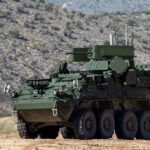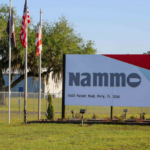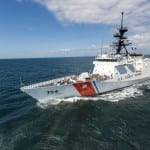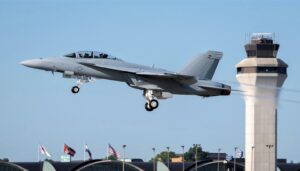The Navy will pursue an incremental strategy for the Littoral Combat Ship’s (LCS) mine countermeasures mission package that will involve transitioning from the Remote Minehunting System to an unmanned surface boat pulling a sonar and—at a later stage—moving to an unmanned underwater vehicle with a sonar embedded inside it, the service’s acquisition executive announced Wednesday.

The Defense Department announced last month that it had formally canceled the Remote Minehunting System manufactured by Lockheed Martin [LMT], one of the systems slated for inclusion in the LCS’s mine countermeasures (MCM) mission module, because of the poor reliability of its Remote Multi-Mission Vehicle (RMMV).
Instead, the Navy will make upgrades to two other systems in the ship’s MCM mission module—the Common Unmanned Surface Vehicle (CUSV) made by Textron [TXT] for the midterm and General Dynamics’ [GD] Knifefish, which the Navy believes will be its final minehunting solution, said Sean Stackley, assistant secretary of the navy research, development and acquisition.
If those systems can meet the Navy’s requirements, it could possibly mean a larger program of record—and larger profit—for both companies. Stackley indicated the service would likely have to buy more Knifefish UUVs if testing is successful, and it is currently analyzing whether it may need more CUSVs.
This strategy appears to be a step back from the Navy’s initial plan, which was to hold some sort of a evaluation and competition with Knifefish, CUSV and RMS all participating (Defense Daily, March 23).
Although RMS showed it could find mines during technical evaluations last year, the RMMV did not meet reliability requirements, failing more often than expected. The Navy then chartered an independent review to assess the future of the program, during which it considered redesigning the RMMV, Stackley told reporters after a Senate Armed Services Committee hearing. However, the list of negatives outweighed the positives.
“That’s about a $15 million vehicle. We’re probably not just going to build one, we’ll probably have to build four or so to support IOT&E (initial operational test and evaluation),” he said. “That’s a significant investment [over a] three-year period of time, and we have not closed the loop in terms of certainty.”
Instead, the Navy decided to make upgrades to the RMMV that would allow it to meet most of its 75-hour reliability requirement. It will deploy the vehicles it in 2018 as an “inoperational capability” that doesn’t meet requirements but can still augment the minehunting mission, Stackley said.
In the midterm, CUSV will take on the minehunting role, he said. The Navy will accept delivery of the first of those unmanned surface vehicles this August and begin testing its ability to tow the Raytheon [RTN] AN/AQS-20A sonar. Assuming all goes well, the MCM mission module would hit initial operational capability in 2020.
CUSV costs only about $5 million per vehicle, making it more affordable than RMMV. Presuming success, using it as an RMS replacement also reduces the number of systems in the MCM package, which reduces the burden on crews and simplifies operations, Stackley said.
The biggest technical challenge, which earlier this decade prevented the service from using CUSV as a potential RMMV replacement, will be ensuring the vehicle and sonar can handing varying sea states, he said. “The surface vehicle is going to be subject to sea action, and that’s going to impact the sensor.”
However, the Navy is confident that new software and isolation devices can provide greater stability.
The CUSV is already included in the MCM package under the name Unmanned Influence Sweep System (UISS), which was originally planned to “sweep” for mines by towing a cable that triggers them to explode. The Navy is currently assessing whether it will be able to perform both tasks at once, or whether multiple vehicles will be needed, said Vice Adm. Joseph Mulloy, deputy chief of naval operations for integration of capabilities and resources.
“My goal is to at least try to inform some of this by the ’18 budget, but I don’t know . That’s a tight timeline too because we still want to get out there and test and fix the RMMV,” he said. “I would love to have it done in time to say what I would have to buy differently with CUSVs in the 2018 budget, but it may be ‘19.”
Ultimately, the Navy believes Knifefish is its longterm minehunting solution, Stackley said. However, it needs to improve the endurance of the UUV.
“If we succeed in getting the endurance that we need out of Knifefish, now you have further simplified the mine countermeasure mission package because now you don’t have a vehicle towing a sensor. Now you’ve got a sensor embedded in a vehicle,” he said.
Mulloy noted that the department is investing more than $600 million over the next five years on UUV development, which could help spur improvements in vehicle endurance that can be dovetailed into Knifefish.













